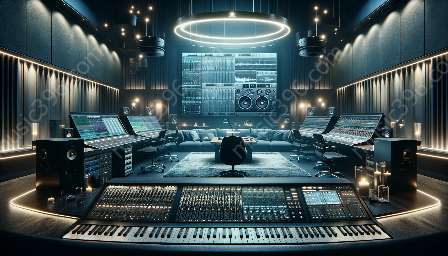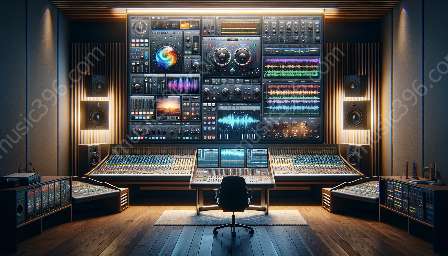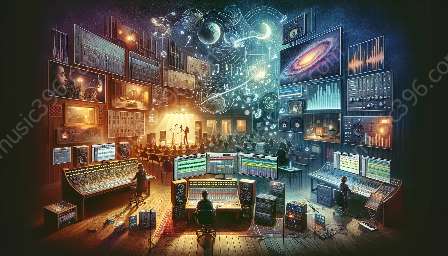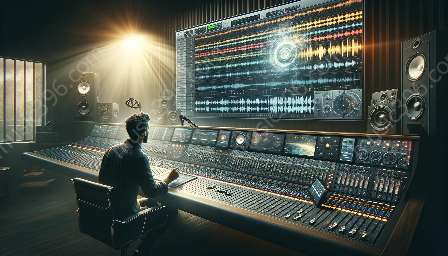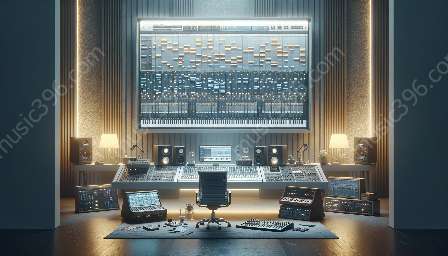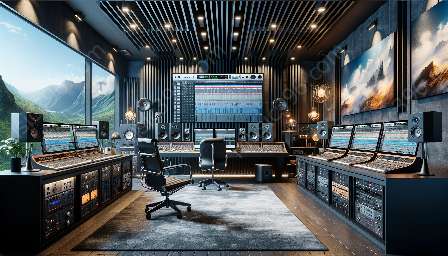In the world of digital audio workstations (DAWs), multitrack recording has revolutionized the way music and audio production is carried out. This article will explore the crucial role that field recordings and sound design play in the context of multitrack recording within a DAW, providing a comprehensive overview of the key concepts and best practices.
Overview of Multitrack Recording in DAW
Before diving into the role of field recordings and sound design, it is essential to understand the fundamentals of multitrack recording within a DAW. Multitrack recording refers to the process of capturing and storing individual audio tracks separately, allowing for independent editing, processing, and mixing. DAWs are software applications that enable users to record, edit, and manipulate multiple audio tracks simultaneously, making them an indispensable tool for modern audio production.
Digital Audio Workstations
Digital audio workstations, commonly known as DAWs, serve as the central hub for multitrack recording and post-production. They offer a wide range of features such as recording, editing, mixing, and mastering, providing a comprehensive solution for music and audio producers. Popular DAWs like Pro Tools, Logic Pro, Ableton Live, and FL Studio have become industry standards, each offering unique capabilities and workflows tailored to different needs and preferences.
The Role of Field Recordings
Field recordings involve capturing environmental sounds, natural elements, or any audio outside of a controlled studio environment. These recordings serve as valuable resources for adding depth, atmosphere, and realism to music and audio projects. When integrated into multitrack recording within a DAW, field recordings can introduce unique textures, ambiances, and sonic landscapes that enhance the overall sonic experience.
Enhancing Authenticity and Creativity
Field recordings allow producers to infuse their projects with authentic, real-world sounds that cannot be replicated through synthesized or sample-based instruments. Whether it's the subtle rustling of leaves, the distant rumble of traffic, or the soothing sounds of nature, field recordings provide a rich palette of sonic elements that can inspire new creative directions and elevate the emotional impact of a piece of music.
- For example, the use of field recordings of rain and thunder can create a sense of intimacy and drama in a cinematic score, immersing the listener in a compelling auditory experience.
- Similarly, incorporating recordings of city street sounds or public spaces can bring a sense of urban realism and energy to electronic or experimental music compositions.
Sound Design in Multitrack Recording
Sound design is the art of creating and manipulating audio elements to achieve specific sonic goals and aesthetic effects. Within the context of multitrack recording in a DAW, sound design encompasses a wide range of activities, including the creation of bespoke sounds, the manipulation of existing audio sources, and the shaping of sonic characteristics through processing and effects.
- Producers and sound designers often utilize digital synthesizers, samplers, and audio processing plugins to craft original soundscapes, textures, and effects that complement the core elements of a track.
- Sound design in multitrack recording also involves layering and blending different audio sources to build depth, complexity, and sonic richness in a composition.
- Additionally, sound design techniques such as granular synthesis, convolution reverb, and spectral processing can be employed to transform and manipulate field recordings and other audio assets, opening up new creative possibilities and enhancing sonic variety.
Integration of Field Recordings and Sound Design in DAW
When working within a DAW, producers have the flexibility to seamlessly integrate field recordings and sound design elements into their multitrack projects, thanks to the powerful tools and functionalities provided by the software. DAWs offer a range of features that support the import, manipulation, and organization of diverse audio materials, allowing for efficient and creative use of field recordings and sound design concepts.
Workflow and Editing Capabilities
Through the intuitive interface of a DAW, producers can import and align field recordings with existing audio tracks, arranging them across multiple channels and utilizing precise editing tools to tailor their timing, volume, and spatial placement within the mix. This level of detailed control enables producers to seamlessly integrate field recordings into the sonic fabric of a composition while maintaining cohesion and balance across the multitrack environment.
- Furthermore, DAWs offer comprehensive editing capabilities that empower producers to manipulate sound design elements, including the application of time-stretching, pitch-shifting, and spectral processing, allowing for extensive transformation and customization of audio content.
- By leveraging these editing capabilities, producers can explore innovative ways to blend field recordings with synthesized sounds, reshape environmental textures, and layer intricate sonic components to create captivating audio compositions.
Enhanced Mixing and Automation
Multi-track recording in a DAW enables producers to harness the power of advanced mixing and automation tools to refine the balance and spatial placement of field recordings and sound design components within their projects. DAWs offer a comprehensive range of mixing features, including EQ, compression, spatial effects, and dynamic processing, allowing for precise tonal sculpting and spatial localization of audio elements.
- Automation capabilities within DAWs empower producers to create dynamic, evolving sonic landscapes by modulating the parameters of field recordings and sound design elements over time. This level of control enables the integration of expressive and immersive sonic narratives within multitrack compositions, fostering an engaging and impactful listening experience.
Real-time Processing and Performance
In addition to post-production activities, DAWs provide real-time processing and performance capabilities that facilitate the integration of field recordings and sound design into live performance setups and electronic music production. Through the use of virtual instruments and real-time effects processing, producers can incorporate field recordings directly into their performance workflows, allowing for spontaneous creativity and sonic experimentation.
- Live triggering and manipulation of field recordings within a DAW environment enable performers to interact with their sonic environment, creating dynamic and immersive audio experiences for audiences.
- Real-time processing tools such as granular synthesis, live sampling, and spatial processing afford producers the opportunity to craft evolving, textural soundscapes during live performances, blurring the boundaries between field recordings, sound design, and traditional musical elements.
Conclusion
The role of field recordings and sound design in multitrack recording within a DAW is multifaceted and influential, offering producers a wealth of creative opportunities to enrich their audio productions. By integrating field recordings and sound design concepts within the context of a DAW, producers can achieve a heightened level of sonic authenticity, creativity, and expressiveness, enabling them to craft compelling and immersive audio compositions.
With the technological advancements and flexible workflows provided by modern DAWs, the integration of field recordings and sound design has become an integral part of contemporary music and audio production, shaping the sonic landscapes of diverse genres and fostering innovative approaches to sonic storytelling.

